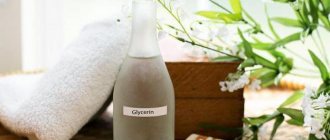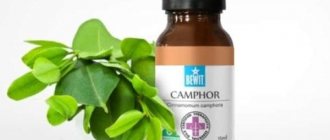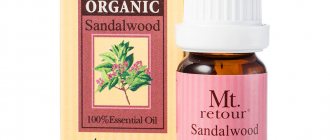History and description
The source of the beneficial substance is the fruits of Simmondsia sinensis. The homeland of the evergreen shrub is considered to be the territory on the border of Mexico and America. But the reference to China in the title is wrong: culture does not grow in this country. The confusion arose due to a misreading, however, even today Simmondsia is called Chinese instead of Californian (which would be more correct).
The liquid, rich in beneficial properties, is extracted by cold pressing from the seeds and nuts of the plant. The fruits resemble acorns in appearance and contain about 50% oil. In its composition and consistency, the substance resembles wax or ether. It is thick, transparent, golden yellow, practically odorless, but this is only relevant at room temperature. At 0 °C the oil hardens, turns into a waxy paste, at the same time losing its transparency, and at +10 °C it begins to melt. Sometimes those who have used the product note that the cosmetic product smells slightly of grease.
Interesting to know. According to scientists, the oily liquid was mined 2000 years ago. It was discovered in a tightly sealed vessel during the excavation of Egyptian pyramids. It is noteworthy that over such a significant period of time the oil did not lose its valuable properties.
The natural product was honored by Native Americans and Aztecs. Local residents of South America and Mexico used the oil for magical rituals, used it as a balm for skin and hair, and also as a disinfectant and healing agent for wounds, burns and ulcers. Jojoba also served as a kind of “liquid currency”. It could be exchanged for food, weapons or jewelry.
In the 20s of the 20th century, the beneficial properties of the oil were noticed by employees of a tree nursery in Arizona (USA), who used the liquid instead of machine lubricant. The jojoba seeds were sent to the University of Arizona.
Scientists have established: in its composition, an oily substance of plant origin is very similar to spermaceti - a waxy fat that is obtained from a special compartment located in the head of the sperm whale, and is used in the manufacture of candles, ointments, creams, etc. This feature was remembered about half a century later, when whaling declined due to a sharp decline in the number of marine mammals.
The cosmetic properties of jojoba were studied more thoroughly, and in the mid-70s, the wild shrub began to be cultivated for industrial purposes, first in Israel and then in the USA.
Today, in addition to these two countries, the production of valuable liquid is carried out in Mexico, Australia, Costa Rica, Paraguay, etc. This is not easy, since the plant needs a special climate, and the fruits begin to bear 3-4 years after planting (they are collected by hand) .
In cosmetology, jojoba oil is considered a base oil. The valuable substance is used in its pure form or added to cosmetic products for skin and hair. At home, it is often combined with ethers, which, due to their highly concentrated composition, are not used on their own.
The raw material for obtaining the oily substance—jojoba seeds—is sold on popular Internet sites that promise to import products from China. However, it is quite problematic to obtain a waxy liquid on your own.
Product Overview
This product is not as rare as, for example, kokum oil: you can buy it at a pharmacy or any other chain. A wide range of products requires a lot of time to select the right product, so buyers are often interested in what brands of jojoba oil are available.
The product under the specified trade name is available in the lines of most manufacturers:
- Zeitoun;
- ARS;
- Levrana;
- Spivak;
- Botany;
- Aroma;
- Natural oils;
- Mirolla;
- Aspera.
Products from the first two manufacturers are highly expensive, have earned the trust of customers due to their appropriate quality, and have a rating of 5.0 points out of a maximum of 5.0. For this reason, if you don’t have time to search, you can trust the reviews. Below we will look at most of the products separately.
Hydrophilic jojoba oil
Hydrophilic oil
The product of the Spivak brand is intended for removing traces of cosmetics from the face, including the area around the eyes, is available in a plastic bottle without a dispenser, the cost of a bottle is 100.00 ml. is 200.0 rubles. The composition presented on the product packaging is distinguished by the presence (in addition to the main substance):
- rapeseed, almond, castor oils;
- rosemary extract;
- polysorbate.
Recommended by about 90% of satisfied customers; girls note a weak cleansing effect, clogging of skin pores, and an allergic reaction as disadvantages. Representatives of the fair sex, whose dermis did not react, are satisfied with the result.
Jojoba massage oil
Massage oil
A product intended for massage procedures is highly expensive, and to make it easier to choose the best jojoba oil, we have compiled a rating:
| Brand | Bottle volume, ml. | Price, rubles | Recommend, % |
| Stenders | 250,0 | 2320,0 | 100 |
| Vivasan | 50,0 | 1950,0 | 100,0 |
| Kneipp | 100,0 | 575,0 | 100,0 |
| R-Cosmetics | 250,0 | 1357,0 | – |
| Turquoise | 50,0 | 150,0 | – |
There are no reviews for some of the products presented in the table on various services (Biryuzok, R-Cosmetics).
Jojoba oil Botanica
Botany
Recommended by 94-98% of satisfied customers who note its effectiveness when used to care for the body, strands, lips, and area around the eyes. Girls are impressed by the quick improvement effect and the absence of side effects. A bottle of 30 milliliters will cost 150 rubles.
Jojoba oil Golden "Spivak"
Spivak oil
The product is produced in small volumes - a dark glass bottle of 10.0 ml. at a price of 130.0 rub. The manufacturer writes about possible use as a massage product. Recommended by 100% of satisfied customers, which were mainly used for the regeneration of severely damaged curls, which indicates effectiveness.
Jojoba oil Golden "Levrana"
Levran oil
The product is recommended by about 98% of satisfied customers. Girls use it for hair care, prevention of stretch marks after pregnancy, instead of lip balm and notice an improvement, leaving positive impressions online. The price for a bottle of 50.0 milliliters is 550.0 rubles.
Jojoba oil Natural oils
Jojoba oil Natural oils
This product can be purchased at the pharmacy for 98.0 rubles/10.0 ml. On the Internet you can find many positive reviews about its use as a basis for perfumes and home care products - face and hair masks - and even a way to treat diaper rash in newborns. At a relatively low cost, the product has a high rating - 98% recommend it.
Jojoba oil Styx
Styx oil
This Austrian-made product is highly expensive – 2,250 rubles. per bottle of 100.0 milliliters. On the Internet you can find mostly positive reviews about the product; on average, 98% of satisfied users recommend it, which indicates undoubted quality and effectiveness.
Jojoba oil Mirolla
Mirolla oil
The product of the indicated manufacturer can be purchased at the pharmacy at a relatively affordable price - 92.0 rubles for 25.0 milliliters. Customer reviews strongly disagree about the positive impact: some girls leave enthusiastic impressions, others report a complete lack of the promised result. In this case, it is worth taking into account individual characteristics and the tendency of the epidermis to an allergic reaction. Recommend 90-92%.
Aspera jojoba oil
Asper oil
You can buy it at a pharmacy, the cost for 10.0 milliliters will be 140.0 rubles, which is quite affordable, if you do not take into account the small volume. On average, the product is recommended by 90% of buyers, girls' opinions on its effectiveness differ - there are enthusiastic opinions about improving the appearance of the face and strands, and cases of individual intolerance.
Avon jojoba oil spray lotion: reviews
The product is intended to moisturize and nourish the epidermis of the entire body. A bottle with a volume of 15.0 milliliters on average in Russia will cost 290.0 rubles. The product has no restrictions on the types of epidermis and provides an additional softening effect. The rating is 4.5-4.6 points (maximum value 5.0), girls write about the velvety feel of the skin after application, ease of use due to the presence of a sprayer. The downside is that the aroma fades quickly.
Beneficial features
Jojoba has a rich composition, which distinguishes it from its analogues. First of all, there is a large amount of vitamin E, known for its anti-inflammatory, regenerating, and moisture-retaining properties. Also, thanks to this nutritious component, the oil does not oxidize, does not become rancid, and remains fresh for a long time.
The youth and blooming appearance of the skin is ensured not only by vitamin E. Jojoba contains ceramides (or ceramides) - compounds responsible for the hydration of the epidermis, as well as protein, thanks to which the skin acquires firmness and elasticity. The last component is very similar in structure to collagen.
also rich in fatty acids: oleic, erucic, palmitic, etc. These substances regenerate the skin, protect it from negative environmental factors and rejuvenate it. Fatty alcohols (eicosene, etc.) improve blood circulation, which has a positive effect on the nutrition of dermal cells and supplying them with oxygen.
Attention! Oil from the seeds of the jojoba bush is hypoallergenic, so it is considered safe even for small children. It can cause allergies only in case of individual intolerance or the use of a low-quality substance.
Benefits for home use
After just a week of regular use, the skin is transformed thanks to the following actions:
- rejuvenating with lifting effect;
- antibacterial and disinfectant;
- antioxidant;
- exfoliating;
- restorative, regenerating.
The product has a moderate whitening effect, evens out the complexion, eliminates traces of rosacea (dilation of blood vessels and the appearance of vascular networks) and hyperpigmentation.
The oil copes with minor rashes, acne and acne. Despite the presence of fatty acids, the oil in the composition is not comedogenic and does not provoke new inflammatory lesions, pimples and blackheads. Jojoba extract is included in local preparations for dermatoses, psoriasis, complex rashes, and hyperpigmentation.
Indications for use
The diverse and in many ways unique composition has led to a wide range of uses for the oil, since it:
- nourishes, softens and refreshes the skin;
- restores its lipid balance,
- enhances the protective functions of the dermis;
- normalizes the functioning of the sebaceous glands;
- retains moisture, prevents dehydration and flaking of the skin;
- improves blood circulation;
- stimulates the regeneration process of the epidermis;
- has a lifting effect, tightens the skin and makes it more elastic;
- smoothes out fine wrinkles around the eyes;
- improves complexion and texture;
- protects skin from ultraviolet radiation;
- protects lips from chapping;
- provides anti-inflammatory, bactericidal, healing and antifungal effects, therefore it is used as an adjuvant in the treatment of dermatological ailments;
- soothes irritated epidermis;
- serves as a prevention of age-related changes (pigmentation, wrinkle formation, etc.).
Scientists from the University of Michigan have determined that jojoba destroys bacteria and fungi on the skin that cause allergic reactions. And at Ben-Gurion University (Israel) they established the benefits of oil in the treatment of psoriasis, eliminating redness, swelling, and burning sensation.
Jojoba is universal and therefore suitable for all skin types. The natural substance has the greatest positive effect on dry, dehydrated, cracked, flaky and chapped dermis. The oily liquid gently cares for inflamed, irritation-prone, sensitive epidermis.
Those with sagging, aging skin will appreciate the rejuvenating properties of the oil. Also, due to its anti-inflammatory, bactericidal effect, jojoba is suitable for combination and problematic skin suffering from acne and comedones.
For body
Cosmetologists recommend using jojoba oil for the entire body: this will maintain a normal level of moisture and elasticity of the skin, make it tightened, and eliminate stretch marks. Regular application of the product to the neck, décolleté, and arms will help you look young and attractive longer. It should be noted that jojoba oil does an excellent job of removing rough tissue on the knees, palms, feet and elbows. It can also be used for cellulite changes in the skin, both for existing problems and as a preventive measure.
Where to buy and how to store
Oily liquid does not belong to the category of cheap products. The high cost of the natural product is due to the complexity of growing the source of raw materials - Simmondsia sinensis, as well as the peculiarities of the technological process. You can buy waxy liquid from jojoba seeds at a pharmacy or stores specializing in the sale of organic products and natural oils.
As a rule, the product is sold in dark glass bottles with a volume of 30 to 100 ml. Some options:
- jojoba from the Elfarma company - approximately 340 rubles per 30 ml;
- oil from the Botanika brand - about 300 rubles for the same amount;
- product from Aspera - approximately 170 rubles per 10 ml;
- Jojoba Oil from Now Foods (USA) - about 1200 rubles for 118 ml, etc.
Larger bottles of 125 or 250 ml from Thailand also cost a lot (1150 and 2150 rubles, respectively). There are also offers for selling oily liquid in bulk. Such sales representatives promise delivery directly from Spain and Israel. The cost of 1 liter of unrefined oil is about 2000 rubles.
The purchased product must be placed in a place protected from sunlight. Temperature - up to +25 °C. After each use, the bottle should be tightly sealed. Due to its chemical composition, the oil does not oxidize for a long time and no sediment appears in it.
Hardening and further melting of jojoba do not affect its beneficial properties. Although there is another opinion. Therefore, the lower limit of the permissible temperature for this product is +5 °C. Do not keep the bottle in the refrigerator.
Attention! Despite the fact that jojoba is a natural preservative, manufacturers limit the shelf life of the product to 12-24 months. Look for this information on the packaging. It is recommended to empty the opened bottle within six months.
Compound
The nuts, which are the raw material for the manufacture of this cosmetic product, contain a significant amount of wax. That is why professional chemists call this product (that is, the final jojoba oil) not oil, but wax.
In its finished form, this oil-wax has practically no odor, solidifies at temperatures below 0, is thick, has a pleasant yellow-golden color, and becomes more liquid when heated.
This natural product contains many different components:
- a protein similar in properties to collagen and providing skin firmness and elasticity;
- amino acids;
- vitamin E (tocopheron), which provides antioxidant, anti-inflammatory and other properties of the oil.
This composition creates an almost optimal cosmetic product for skin care.
General recommendations
Jojoba can be used all year round. In the cold season, the oil will protect the skin from moisture loss and flaking, and in the heat it will enhance the effect of sunscreen cosmetics. Before use, you can slightly warm the oily liquid in a water bath. This will make it easier for you to distribute the thick product over your skin.
Take your time to apply the product you just purchased to your face. First, test the jojoba on your wrist or inner elbow. Add some oil and wait. Ideally, it is recommended to monitor the treated skin for at least 12 hours. The absence of redness, peeling, itching and other symptoms of individual intolerance to the product is an indication for its use in pure form or as part of face masks.
Before using jojoba, thoroughly cleanse your skin of impurities and makeup. Pat it dry with a towel to dry thoroughly. If you add other components to the oil, do so immediately before using the mixture. Distribute the pure product or a mask prepared on its basis using a cotton swab.
Apply jojoba to the skin around the eyes for no more than 15 minutes about once a week. Do not leave the nourishing product on your face overnight. When washing your face, use plenty of warm water. Periodically give your skin the opportunity to take a break from the course of procedures, which consists of 10–15 masks, 1–2 times a week. Take a break for 1–2 months.
Contraindications
Using jojoba oil on the face can be both beneficial and harmful. In some cases, its use may be contraindicated. For example, it is not recommended for pregnant and lactating women to apply oil compositions to the skin. The product includes erucic acid, which has a toxic effect on the body when it accumulates.
Simmondsia fruit oil can cause an allergic reaction if you are intolerant to it. Before using a cosmetic product, it is advisable to conduct a test to identify hypersensitivity to the components of the oil solution. A few drops are applied to the elbow or wrist. The reaction is assessed after two hours. The product can be used in the absence of redness and irritation.
Methods of application
Oil has become widespread in cosmetology. After all, jojoba benefits the skin of the face, body and lips, hair and nails. They enrich creams, lotions, balms, conditioners, soaps and other products.
At home, the options for using the oil were determined by the thick consistency of the extract from the fruits of Simmondsia sinensis. In its pure form, the valuable product is most often applied to the hair or specifically to individual areas of the skin. For example, if you need to lubricate rough, cracked, damaged areas on the elbows, heels, etc.
In other cases, jojoba is mixed with other nutritional ingredients, added to homemade masks, used as a base for esters or “companions” for other base oily liquids (including when performing massage).
Attention! Jojoba is not used internally, since it is practically not absorbed. This sets it apart from other all-purpose oils, such as coconut or apricot kernel oils.
For face and eyelids
The most popular ways to use jojoba oil are;
- Makeup removal . The fatty, oily liquid perfectly cleanses the skin even from waterproof cosmetics.
- Preparation of creams and face masks . Healing mixtures are made based on food products, freshly squeezed juices and purees. A common ingredient in the formulations are various essential oils.
- Enrichment of finished products: creams, lotions, etc. For every 10 parts of cosmetic product, take 1 part of jojoba.
For daily care, you can mix this oil with other basic oils: avocado, almond, etc. The proportion is 1:1. The mixture is suitable for removing makeup, softening and moisturizing the skin after a shower.
Options for useful facial formulations:
- For skin elasticity . To prepare this remedy, measure out 1 tbsp. l. jojoba and add 1-2 drops of patchouli, sandalwood, chamomile ether.
- Against acne . In a 1:1 ratio, combine 2 basic oily liquids - jojoba and grape seed. For each tablespoon of this base, take 1-2 drops of lavender, clove, cedar, and tea tree ether. Lubricate problem areas of the skin several times a day or apply gauze wipes soaked in the composition for 15–20 minutes (2 times a day).
- For wrinkles . In one container, mix jojoba and avocado or almond oil (1:1). You can combine all three ingredients in equal proportions. Measure a tablespoon of the product and add 1-2 drops of neroli, pine, mint and fennel esters to it. If you are preparing a mixture for dry, inflamed skin, add an additional drop of the same amount of chamomile, orange, and sandalwood oils. Twice a day, apply this product to the areas where wrinkles have begun to appear.
- For hydration . This mask will also help if the skin begins to peel off. Combine 2 tbsp. l. jojoba and 1 tbsp. l. apricot or peach oil. Another second component can be replaced with orange ether. Using a cotton swab, apply the product to the skin, do not rinse.
- Nourishing antiseptic mask . Combine 25 ml of jojoba with 1 tsp. calendula tinctures. Add 3-5 drops of bergamot, tea tree or lemon ether. Mix well and leave for 24 hours in a dark and cool place. Store in a dark glass bottle. Directions for use: spread over skin with pimples, acne or post-acne, leave for 35 minutes. After this, cover your face with a warm, damp towel. When it cools down, heat it up again and put it in the same way. Your task is to wait until the oil is completely absorbed into the skin.
- Milk lotion . Lightly heat half a glass of milk of any fat content, add 20 ml of jojoba oil and a couple of drops of sandalwood, lavender or bergamot ether. Moisten a small piece of gauze with this mixture and apply it to your face. When the liquid is completely absorbed, proceed to cleansing the skin as usual. The product is effective against increased activity of the sebaceous glands.
- Against flabbiness of the epidermis . A multi-component mask will tighten the contour of the face and make the dermis silky. Grind a medium-sized banana, add chicken protein and 10 ml of the following ingredients: jojoba oil, low-fat natural yogurt, honey and blue cosmetic clay. Having achieved homogeneity of the mixture, apply it to your face, and after 15-30 minutes, rinse with warm water. This mask is more suitable for oily and combination skin, as it effectively tightens pores and regulates the functioning of the sebaceous glands.
- To increase dermal turgor . The following recipe will help make the skin less flabby: combine 15 ml of jojoba oil with 5 ml of beeswax, a similar amount of sour cream, one raw yolk, 1 tsp. lavender ether. Distribute over face, paying attention to the skin around the eyes. After half an hour, rinse with warm water. If the epidermis is of the dry type, take sour cream with a high percentage of fat content, and vice versa.
- For dry skin . Dilute 10 ml of jojoba with twice the amount of rosehip oil. The product can be distributed over the face a couple of times a day.
- For the prevention of acne and comedones . If your skin is prone to the appearance of these problematic elements, use this composition: 2 tsp. Combine jojoba with raw yolk. You will also need turmeric and dry yeast (1.5 tsp each). Apply to skin, after drying, rinse with warm water.
- Curd mask . Designed for dry and normal types of epidermis. Take 40 g of fatty fermented milk product, 1.5 tbsp. l. carrot juice and 2 tbsp. l. jojoba. Mix into a smooth mixture and apply to skin as an anti-wrinkle treatment. The frequency of procedures is once a week. The duration of the session is half an hour.
- Universal fruit mixture . This composition is suitable for different skin types. To make a nourishing mask, mix in one container a puree of 1/4 of an avocado and half a banana, as well as 15 ml of slightly warmed jojoba oil. Apply to face for 15 minutes.
- Anti-inflammatory acne mask . Prepare a dry mass from 1 tbsp. l. cocoa and the same amount of yellow clay. Turn the powder into a thick mixture by adding the required amount of Simmondsia sinensis seed extract. Distribute over skin for 15 minutes.
- Ginger composition . Like the previous one, it has an anti-inflammatory, calming effect. Dilute a pinch of dry ginger with 4-5 drops of jojoba. After 10 minutes, wash with chamomile decoction or warm water. Apply pure oil directly to problem areas. Don't wash it off.
- Against dry skin . To 1 tbsp. l. jojoba add 2 tsp. caraway oil, as well as 2 drops each of bergamot, basil, rosemary and juniper esters. Distribute over skin as usual.
- For post-acne . In 1 tbsp. l. oily extract from Simmondsia sinensis, pour in a couple of drops of mint and clove esters. Apply the product directly to problem areas. Leave it overnight. In the morning, wash your face as usual.
- Makeup cream . Place 30 ml of jojoba oil in a water bath. Once it becomes warm, add 3 grams. beeswax and 10 ml of geranium ether without removing the container from the stove. When the mixture becomes homogeneous, cool it slightly and pour in 10 ml of chamomile infusion, as well as the contents of one ampoule of vitamin E. Store the product in the refrigerator for no longer than a week.
- Rejuvenating mask . Combine 0.5 tsp. glycerin, as well as jojoba, almond, and grape seed oils. Add rose ether. Using a clean brush, spread the mixture over the skin, cover your face with cling film (just make slits for the eyes, nose and mouth). After 15–25 minutes, rinse with warm water.
Not all facial recipes are suitable for the delicate skin of the eyelids. In this case, you can use the following options:
- Dilute jojoba with rosehip oil (1:2). Using light patting movements, distribute the product over the eyelids. After 10 minutes, remove the residue using a cotton swab.
- Add a little jojoba (1:3) to your regular eye cream. Leave the mixture until the morning, then wash your face.
- Combine the oily liquid from the seeds of Simmondsia sinensis and almond oil in equal proportions. Add a couple of drops of pine and fir esters. Rub this mixture onto your eyelids 1-2 times a day, every other day.
There are also instructions for preparing individual products for the skin around the eyes:
- Measure out 1 tbsp. l. avocado and jojoba oils. Add 1 drop each of mint, rosemary, rose and sandalwood ether. Apply once daily.
- Or combine 1 tbsp. l. extracts from Simmondsia sinensis seeds with liquid vitamins A and E (take 2 drops each). Distribute over the skin around the eyes, and after half an hour, carefully remove the residue with a cotton swab (do not rinse).
- For this recipe, first prepare a chamomile infusion: pour 1 tbsp. l. flowers with a glass of boiling water, leave for 20 minutes. Measure 15 ml of liquid, combine with 2 drops of aloe juice and 10 ml of jojoba. 15 minutes after applying to the skin around the eyes, remove the residue with a cotton pad and rinse with water.
For lips, eyelashes, eyebrows
The oil effectively cares for lips, making them softer and more moisturized. Use the product in its pure form or as an ingredient in healthy mixtures. To prepare a universal balm, just add 1 tbsp. l. jojoba 1-2 drops of one of the esters: mint, lemon balm or rose. You can make a lip cream that softens and nourishes the delicate skin in this area and heals small cracks. It can be applied daily. Recipe:
- melt 1 tsp in a water bath. beeswax;
- add 1.5 tsp. cocoa butter;
- stir a little, remove from heat;
- pour in 2 tsp. jojoba;
- Pour into a convenient dark glass container and store in the refrigerator.
To remove flaking from chapped lips, combine 1 tsp. jojoba with 0.5 tsp. Sahara. Use as a scrub.
To rejuvenate and soften the skin of your lips, try the following mask:
- mix 1.5 tsp. natural honey, 1 tsp. jojoba and vitamin A capsule;
- spread over lips for 20 minutes;
- use 2-3 times a week.
Regular use of a natural waxy product also has a positive effect on the condition of the eyelashes. They become stronger, thicker, shiny, and begin to grow better. For example, to do this, you can mix a vitamin A capsule with jojoba, almond and castor oils (take 1 tsp of each).
For convenience, pour the mixture into a washed mascara tube. Apply the nourishing composition to the eyelashes with a brush, leave for half an hour, remove the residue with a paper napkin. Repeat the manipulations daily for a month. Then a 3-week break is required, after which you can repeat the course.
Another remedy is prepared from 1 tbsp. l. jojoba and esters of lavender, rosemary, rose, taken 2 drops each. The mixture is applied to the eyelashes every other day. Every 2 months you need to take a break for at least 2 weeks.
An extract from the fruits of Simmondsia sinensis can accelerate the growth of not only eyelashes, but also eyebrows. In this case, it is most effective to use pure oil. Distribute it with massage movements to simultaneously improve blood circulation. Perform the procedure daily. The duration of the session is a month. After a break of 14 days, you can resume sessions.
By the way. Jojoba oil is indispensable for skin care after shaving (also important for men), sunbathing, showering, sauna or steam bath. Young nursing mothers use a product to prevent cracking of the nipples.
Anti-aging
In order to carry out an effective home treatment that will prevent premature aging of the skin, you will need two tablespoons of jojoba, a couple of drops of patchouli oil, and one teaspoon of flaxseed oil. Mix all of the above ingredients in a non-metallic container and apply to your face. The mask should be on the skin of the face and neck for a quarter of an hour. After finishing the procedure, wipe the skin with a napkin.
If you do the mask two to three times a week, you will quickly notice that wrinkles are smoothed out and the shape of your face has become clearer. You will quickly notice the effect that jojoba oil has: the properties and use of this product for the face are truly miraculous. Women who regularly use this method note that their skin has become the same as it was when they were twenty years old.
Advice! Apply the mask with special brushes: this will make the procedure not only more hygienic, but also pleasant. In addition, the brush will help provide a soft, delicate massage to the facial skin and improve blood circulation.
Jojoba oil will help restore youth to your skin
Precautionary measures
There are no contraindications to the use of the product, however, in exceptional cases, an allergy to the oil may manifest itself in the form of peeling, red spots and itching.
If jojoba did not cause such a reaction when testing, feel free to use it in its pure form or as part of various mixtures. But do not leave nourishing masks with this component on overnight, unless you use it specifically on problem areas.
Due to its moisture-retaining properties, jojoba can cause swelling, especially in the skin around the eyes. Apply the oil carefully to these areas, as well as to the eyelashes, so as not to get on the mucous membrane. This will not cause harm, but it will take a long time to wash out the oily film with copious amounts of water.
Since jojoba accelerates hair growth, distribute it carefully to areas where excess hair is undesirable.
Anti-cellulite oil
Based on jojoba essential oil, the properties and uses of which are described in this article, you can make an excellent remedy for anti-cellulite massage. Take five tablespoons of oil and mix them with citrus essential oils (orange, grapefruit or tangerine). After this, massage the problem areas using your hands or special massagers.
This product will not only help get rid of cellulite, but will also make the skin smoother and firmer. In addition, you will receive an aromatherapy session that will lift your spirits and give you energy.
Advice! To get rid of cellulite, you can prepare a scrub based on ground coffee and jojoba. Mix ground coffee with shower gel to obtain a homogeneous mass with the consistency of rich sour cream. After this, add two to three tablespoons of jojoba into the mixture. In the shower, apply a homemade scrub to problem areas, massage them thoroughly and rinse with cool water. After the procedure, any suitable cream is applied to the skin.
Using jojoba essential oil you can make an excellent anti-cellulite massage product.
Advantages and disadvantages
The benefits of the oil are no less than the indications for use:
- penetrates into the deep layers of the dermis;
- easily absorbed without leaving behind a greasy film;
- allows the skin to “breathe”;
- rejuvenates the epidermis, improving its relief, including by smoothing out fine wrinkles;
- regulates the separation of sebaceous secretions;
- is multifunctional in terms of application;
- is hypoallergenic;
- moisturizes and nourishes the skin;
- protects it from peeling, chapping, sunburn;
- suitable for different types of dermis;
- used to treat certain skin diseases;
- Sold in a wide range, including online.
Disadvantages of jojoba oil:
- is quite expensive;
- needs careful selection, since there is a high chance of stumbling upon a fake or low-quality product;
- due to its thick consistency, it may cause discomfort when applied to the skin;
- activates hair growth, which in some cases is undesirable;
- in rare situations it can still cause an allergic reaction.
Facial skin care
If you use the oil regularly, your skin will retain its radiance and elasticity for a long time. This is very simple to do: apply a small amount to the skin of the face, neck and décolleté instead of cream. By the way, jojoba oil is absorbed quickly enough, so there will be no greasy film left on the face, which impedes gas exchange. Plus, you won't stain your bed linen. Excess product that the skin has not absorbed should be blotted with a paper napkin.
By the way, if you regularly use oil, you can get rid of both excessive dryness and oiliness of the skin. The product will nourish dry skin and protect it from external influences, and for those with oily skin it will help reduce the activity of the sebaceous glands. The product will help maintain youth for a long time due to the presence of a high concentration of vitamin E, which is a natural antioxidant.
Advice! To make the care even more effective, you can add a few drops of any essential oil to the base jojoba oil. Be careful: essential oils can cause severe allergies and even skin burns. Therefore, before using such a home remedy, be sure to test on a small area of skin, for example, on the crook of your elbow.
If you regularly use oil, you can get rid of both excessive dryness and oiliness of the skin.
Ready-made products
A priori, cosmetics with jojoba oil cannot be cheap if the manufacturer uses natural raw materials. Examples are creams from the professional Israeli brand ANNA LOTAN. Part of the Liquid Gold series of anti-aging products. There is a night Golden Night, a day Golden Day and a Solid Gold eye cream. Cost - from 2000 to 3000 rubles (depending on the volume of the bottle: 30, 50, 60 ml).
A more budget option is the Biobeauty Universal Restoring Cream. A 50 ml bottle costs 880 rubles. The product can be used in the morning or at night to rejuvenate the skin and saturate it with vitamins.
The REVITAL INTENSE mask from MESOPHARM PROFESSIONAL will help relieve inflammation and make the skin soft and velvety In addition to jojoba, it includes shea butter, olive oil, etc. Price: 1300 rubles for 50 ml or 3300 rubles for 150 ml.
The Bio Gialuron mask from the Russian company Alpika also has a rich composition: jojoba, geranium, shea, sunflower, grape seed oils, as well as other components. Cost - about 1200 rubles per 100 ml.
Also in the line of many manufacturers there are serums enriched with jojoba. For example, SO RICH from the ROYAL FORMULA series for dry and mature dermis from TEANA (30 ml costs about 1,100 rubles). Or serum for aging skin PERFECT LIFT from MEDICAL COLLAGENE 3D (850 rubles for 30 ml), etc.
Popular Jojoba Oil Products You Should Try
To get the most out of using jojoba oil in your skincare routine, it is important to find cosmetic formulas that contain organic, cold-pressed jojoba oil. It is this that retains more antioxidants than those produced during the hot pressing process. Check out the top 10 products below.
- Cliganic 100% Pure & Natural Jojoba Oil (100% pure organic cold-pressed jojoba oil, unrefined and all-natural, making it ideal for dry skin and hair);
- ArtNaturals Organic Jojoba Oil (universal organic jojoba oil for face, body and hair);
- Leven Rose Pure Cold Pressed Natural Unrefined Moisturizer for Skin, Hair and Nails (multifunctional jojoba oil for skin, hair and nails care);
- NOW Solutions Certified Organic Jojoba Oil (organic jojoba oil for face, body and hair);
- Vigour Skin Therapy Organic Jojoba Oil Cleanser (organic cleanser with jojoba oil to remove makeup);
- Caudalie Vinosource Overnight Recovery Oil (dry night recovery oil with jojoba and grape extracts for dry and sensitive skin);
- Endota Spa Intense Moisture Mask (moisturizing and restoring face mask with the addition of jojoba oil);
- Ella Baché Creme Jojoba (nourishing and softening cream with jojoba oil for intense hydration);
- Go-To Face Hero (soothing, moisturizing and protecting face oil with jojoba, almond, macadamia, Brazil nut, evening primrose, calendula and rosehip oils);
- Kate Blanc Cosmetics Jojoba Oil (cosmetic jojoba oil for body and hair care).
Reviews from cosmetologists
Specialists whose work is related to cosmetology rarely comment on the effectiveness of products used at home. Nevertheless, jojoba has earned a good reputation.
Since this oil is a universal ingredient, cosmetologists sometimes leave reviews about specific products that contain a waxy substance. For example, here we are talking about the Jojoba Peeling Cream peeling from the German professional cosmetics brand Dr. Spiller.
How to choose quality oil
High-quality oil is usually sold in small bottles made of dark glass. The list of main producing countries includes the United States of America, Australia, Mexico, Egypt, Brazil, Argentina, Peru and Israel. It should be noted that in cold climatic conditions this plant is simply not able to survive, and therefore it is enough to look at the specified country to recognize a fake. It is best to store this oil in the refrigerator; before use, you need to heat only the amount that is needed to prepare the cosmetic product. This can be done either at room temperature or using a water bath. By the way, unlike other vegetable oils, this can be stored for several years - due to the fact that it contains a large amount of ceramides, which do not allow it to oxidize.
Reviews from people
Women leave a lot of reviews about jojoba oil from different manufacturers. Most opinions are positive. Like, for example, this, about the products of the Aromatika company.
The next girl liked the product from the Natural Oils company.
There are also a lot of good responses about jojoba from Botanik. For example, this girl was convinced that she purchased genuine oil. She put the bottle in the refrigerator, and the liquid contents turned into a solid, waxy mass. The author of the review uses jojoba in different ways.
Another girl suggests that she might have received low-quality products from Aspera. In her case, jojoba caused an allergic reaction.
However, there are many enthusiastic opinions about this same oil. For example, the girl who left the following review praises jojoba from Asper for its light structure and noticeable effect.
And another user even calls the oil intellectual, at the same time noting its versatility for different skin types.
There are many ready-made products, homemade recipes and ways to use jojoba - there is plenty to choose from. Use any oil as recommended by experts to moisturize your skin, slow down the aging process, and make your face fresh and radiant.
Combating dry lips
If during the cold season the skin of your lips becomes very flaky and cracks, you need to resort to the following method. Every evening, rub jojoba oil into your lips with a few drops of rose essential oil. The oil can also be applied undiluted: this will not make the product any less effective.
You can make an excellent lip scrub using jojoba oil. Add a little jojoba oil to granulated sugar to make a thick paste. Massage your lips and rinse with warm water.
Advice! Men can also use jojoba oil. If you have dry, sensitive skin, applying oil after shaving will help keep your skin smooth and supple.
For hands
The skin of the hands is daily exposed to the adverse effects of temperature changes, ultraviolet radiation, comes into contact with hard water, household chemicals, and therefore needs daily protection, moisturizing and nutrition. Jojoba oil will help cope with this task. You can prepare various care products for your hands. We offer a composition that is suitable for daily use. The list of components is simple:
- ¼ part of a glass of jojoba oil, the same amount of emulsion wax;
- 50 ml water;
- 10-15 drops each of patchouli and incense oils.
In order to prepare such a homemade cream, it is recommended to combine wax and oil, heat them in a water bath and mix, then add essential oil, heat the water in a separate container to 40-50 degrees, and add to the composition. After this, all components must be thoroughly mixed again, poured into a glass jar and left in the refrigerator. The product can only be applied to clean hands.
Effect of oil on wrinkles
The cosmetic industry produces several types of jojoba oils: liquid and essential oils, hard wax. Unrefined cold-pressed oil is considered the most valuable; it contains a maximum of useful components:
- Oleic acid. It forms a thin film on the surface of the skin that protects against external negative factors and fluid loss from the inside;
- Palmitic acid. Stimulates the growth of collagen fibers and activates cell regeneration;
- Stearic acid. Provides abundant hydration and nutrition of the epidermis;
- Gadoleic acid. It is quite rare in nature. It is this that ensures the smoothing of wrinkles and prevents the appearance of new grooves;
- Eicosenoic acid. Also a rare component, a leader in restorative properties;
- Vitamin "E". Known by definition as a “beauty vitamin” and justifying its name. A natural antioxidant smoothes out wrinkles of varying severity, returns the skin to a natural healthy tone;
- Collagen . A building material that provides elasticity to the skin. Helps in cell renewal.
- Fatty alcohols (docosahexoene, tetracosene). Unique components that are not found in any other cosmetic oil. There is no need to be careful with the words “alcohol” in this case; they do not dry the skin; on the contrary, they ensure the delivery of oxygen and fluid to the cells. Positively affects blood circulation.
In addition to the fatty acids listed above, jojoba oil contains the following rare acids: erucic, nervonic, begonic, which also provide reliable protection of the skin from UV radiation, frost and other external irritants.
From the point of view of cosmetologists, the rich chemical composition of jojoba oil is surprisingly suitable for combating wrinkles, especially around the eyes. Each beneficial component of the oily product actively carries out specific actions at the cellular level. As a result, the oval of the face is tightened, both fine and deep wrinkles are reduced.
For eyelashes
Do your eyelashes fall out, break or grow poorly? Jojoba oil, used in its pure form, works real miracles. It should be applied along the edges of the eyelids, thereby nourishing the follicles and strengthening the eyelashes. In addition, this allows you to awaken the bulbs, which are currently in the sleep phase. This significantly increases the volume of eyelashes, they become darker, longer, and the look becomes more expressive. You can use jojoba oil to remove eye makeup.
For curls
When talking about what jojoba oil can be used for, we cannot fail to mention hair. Wax from seeds nourishes and moisturizes curls from roots to ends, restores structure, solving the problem of dandruff, normalizing the functioning of the sebaceous glands. Indications for wax use include the following:
- dry hair;
- lack of volume;
- dandruff;
- slow hair growth or loss;
- increased greasiness;
- damage due to chemical perms, bleaching, frequent use of straightening irons, hair dryers and curling irons.











